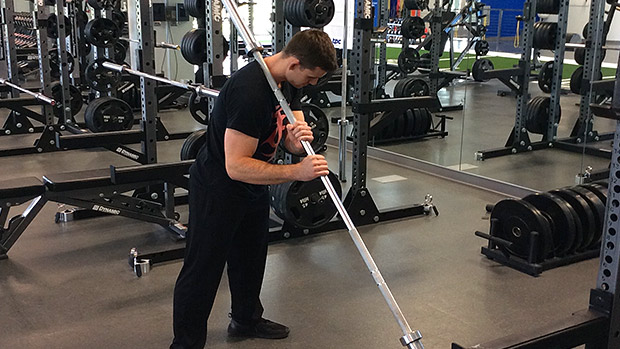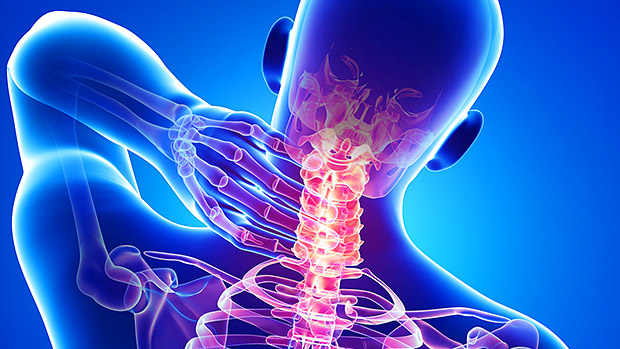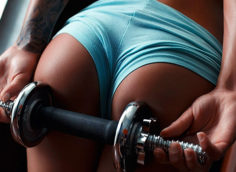Whether it's due to explosive Olympic lifting, tons of shrugging, or just straining under the bar, your neck can become irritated due to overactive traps.
Although this is a problem in and of itself, it can also lead to worse problems down the road, like tension headaches or migraines. Your upper traps, after all, are attached to the base of the skull.
Making things worse, overactive upper traps will "take over" during rows and other pulling exercises which will lead to poorly developed middle and lower traps, rhomboids, and lats.
If you're ready to ditch your neck pain, use these mobility, stretching, and strengthening exercises to loosen your traps and retrain your mid-back.

Begin your workout by doing a little soft tissue work on the traps. Releasing your overactive traps first is a must if you want to fix your neck pain. It's tough to foam roll your traps, so try applying pressure with a barbell.
Once you've released your bound-up traps, do the following stretch on your neck/traps to restore your range of motion.
Side Tilt Neck Stretch with Shoulder Depression
Attach one end of a band to a low anchor and the other end to your wrist to depress one shoulder.
Use your other hand to pull your head in the opposite direction. First, bring your chin to your chest, followed by taking your chin toward the ceiling. Stay in the range where you feel the most tension.
The goal here is to both depress and retract your shoulder blades. Strengthening and activating your mid-back will help balance out your upper traps. To make sure your mid-back is doing the work, you'll want to go much lighter and do more volume than you normally would for these exercises.
One-Arm Lat Pulldown
Visualize your shoulder blade sliding down your back with each pull. The goal is to pull your traps down by activating your lats.
One-Arm Seated Cable Row
Visualize squeezing your shoulder blade so that it moves closer to your spine each time you pull the handle towards the bottom of your rib cage. This will keep the shoulder from elevating and the upper traps from taking over.





